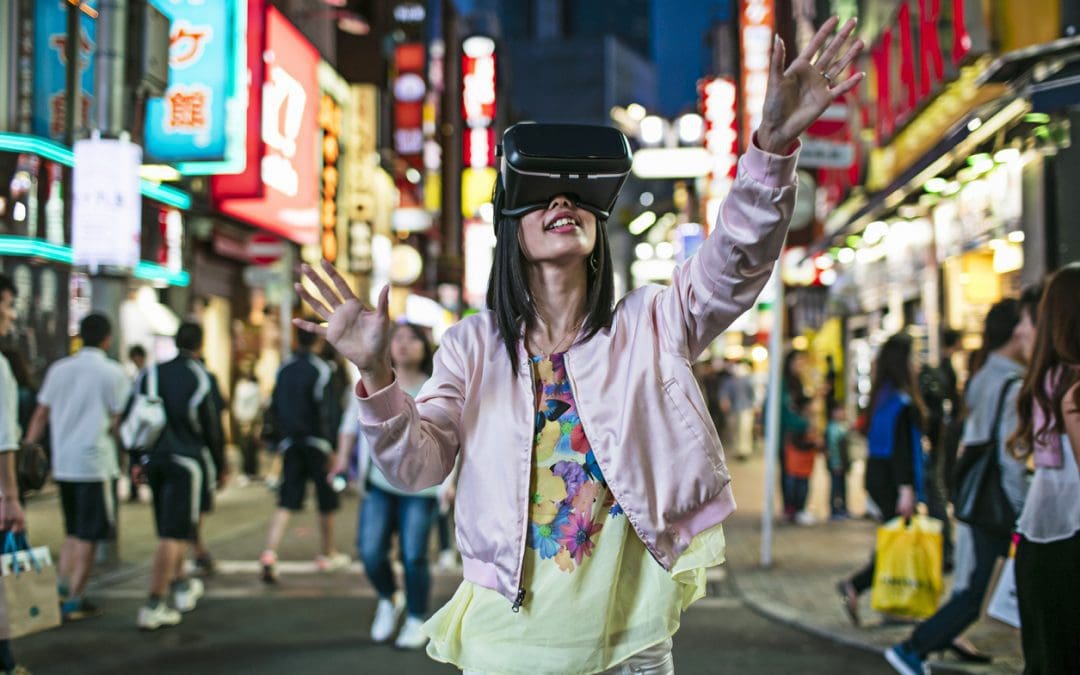In Part 1 of our series on virtual reality, we covered how you can create unique real estate home tours, plus endless marketing opportunities. Now it’s time to see how you put virtual reality into practice.
At Visionair Photography, we’re changing the game in how we present photography and video for Australian companies. The most important part of using virtual reality is creating realistic and appealing experiences.
What exactly is a VR experience, though? Also, how do we go about creating VR fly-throughs? Find out in Part Two of our VR series.
Defining a Virtual Reality Experience
An “experience” in VR for a customer brings them a realistic opportunity to sample something before spending money. Consumers are more careful now in what they buy, especially during tough times when they don’t want their money wasted.
Virtual reality offers a chance to interact with something real before they buy anything. This works the best for more expensive things like travel experiences or buying a home (as we showed in Part 1).
We work often with Australian travel companies to create photography for their marketing. Now we offer VR experiences as well, even though it’s not limited to the travel industry.
Travel Experiences in Hotels or Resorts
One of the best ways to use VR in the travel industry is for advertising resorts or hotels. Those of you who operate a hotel chain probably have trouble trying to market exactly what you offer in terms of amenities. It’s sometimes hard to convey how some of those features work through mere still photography or even video.
Now you can have potential guests experience what it’s like to stay at your resort. VR takes them through every section of your hotel rooms, including interacting with features in the living space.
You can also take them outdoors, like the resort swimming pool. This includes realistic depictions of people interacting with the environment. No longer do you have to experience an overly basic VR experience where it looks like the user is the only person in the area.
Cruise Ships and Holiday Destinations
As we’ve mentioned, we also work with cruise lines that take tourists to various Australian cities. Our VR experiences can easily accommodate your cruise line guests by showing them all your facilities and styles of rooms.
Considering they can literally interact with these environments, they’ll get a truly realistic feel for what it’s like being on a cruise.
It’s the same with holiday destinations, especially for expensive and exotic places. Guests experience the true beauty of these destinations through a prospective short VR preview. Just five minutes of this could compel them to buy in.
Flying Experiences in VR
Virtual reality isn’t just about being on foot. By attaching a VR camera to a drone, we’ll be able to capture flying experiences like no other.
In the world of real estate or architecture, this is invaluable. With a branded VR headset, a client can fly over a specific building or neighbourhood to get a realistic idea of what a new structure is going to look like.
Fly-throughs have limitless possibilities. It’s possible to do this same experience with a cruise line or resort to give a more expansive view of your properties. Besides, who doesn’t love the feeling of flying in mid-air, other than those prone to motion sickness?
Use VR Now Before the Market Becomes Overcrowded
It’s fortunate in a way that Australia lagged a little on VR technology. We’re offering it to you now so you can start using it before everyone else jumps on the VR train.
Again, we’ll be offering Google Cardboard, plus other branded headsets to all companies we work with in the future.
Be sure to visit our website at Visionair Photography to learn more about our VR offerings and what it means for your business down the line. We predict the market will become flooded in another year, so act now.

